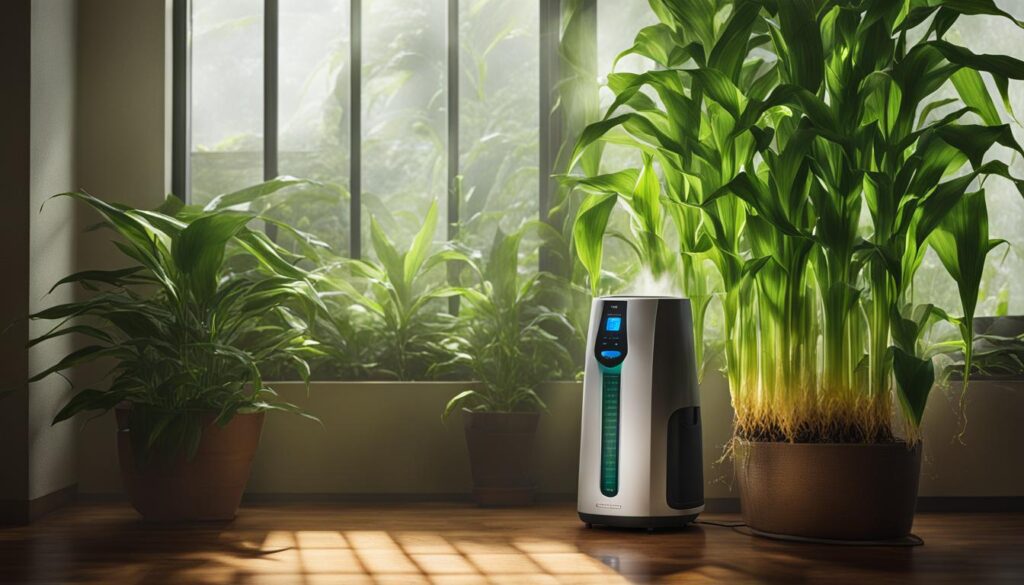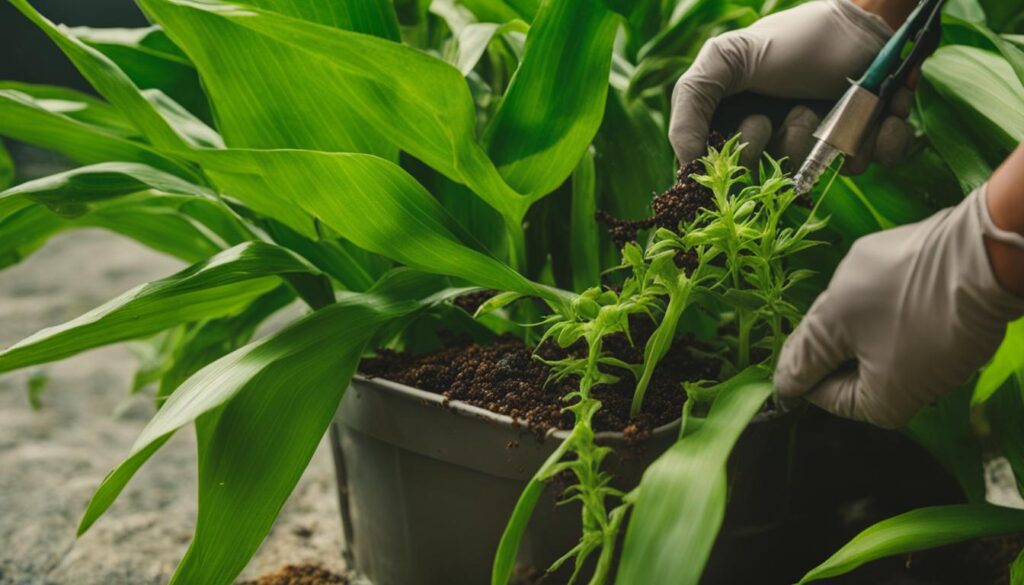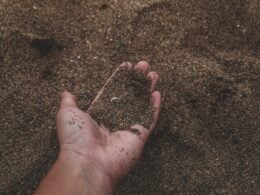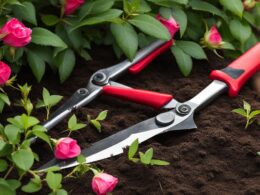Welcome, plant enthusiasts! Today we’re here to help you revive your dying corn plant. We know how distressing it can be to see your beloved plant showing signs of decline. But fear not, we’re here to guide you every step of the way in nursing your plant back to health. With a little care and attention, you can bring your corn plant back to life and enjoy its beauty once again.
Post Summary:- Recognize the signs of a dying corn plant, such as yellowing leaves and stunted growth.
- Create the right environment for your corn plant by providing proper light, temperature, humidity, and watering.
- Revive a dying corn plant by relocating it, trimming away damaged leaves, adjusting watering, refreshing soil, and fertilizing.
- Maintain a healthy corn plant by keeping conditions consistent, monitoring for issues, and providing proper nutrition.
- Tackle pests and diseases by using natural remedies and practicing propagation through division.
Signs of a Dying Corn Plant
If you notice your corn plant looking a little under the weather, it’s important to recognize the signs of distress. These symptoms can indicate that your plant is in trouble and needs some extra care. Keep an eye out for the following:
- Yellowing leaves: When the leaves of your corn plant start turning yellow, it’s a sign that something isn’t right. This could be due to overwatering, underwatering, or nutrient deficiencies.
- Brown leaf tips: Brown tips on the leaves can be caused by various factors, including low humidity, overfertilization, or inconsistent watering.
- Droopy leaves: If the leaves of your corn plant are drooping, it could be a sign of underwatering or root rot. Feel the soil to determine if it’s too dry or waterlogged.
- Stunted growth: A lack of growth or slow growth may indicate that your corn plant is struggling. Check the light conditions, temperature, and overall care routine to ensure optimal growth.
If you notice any of these symptoms persisting or worsening, it’s time to take action and give your corn plant the attention it needs. By addressing these signs of distress, you can increase the chances of saving your dying corn plant and bringing it back to health.
| Symptoms | Possible Causes |
|---|---|
| Yellowing leaves | Overwatering, underwatering, nutrient deficiencies |
| Brown leaf tips | Low humidity, overfertilization, inconsistent watering |
| Droopy leaves | Underwatering, root rot |
| Stunted growth | Poor light conditions, improper temperature, inadequate care |
Remember, the key to saving a dying corn plant is early detection and prompt action. By addressing the signs of distress and making the necessary adjustments to your plant’s care routine, you can give it the best chance of recovery. Stay tuned for the next section, where we will discuss how to create the right environment for your corn plant to thrive.
Creating the Right Environment
Creating the right environment for your corn plant is crucial to its overall health and well-being. By understanding and meeting the care conditions that this plant requires, you can ensure that it thrives and brings beauty to your home. Here are some key factors to consider:
Light:
Corn plants prefer indirect light, making them perfect for bright but partially shaded spots in your home. Place them near a window where they can receive filtered light or use sheer curtains to diffuse direct sunlight.
Temperature:
Maintaining the optimal temperature is essential for a healthy corn plant. Aim for a range between 60 and 75 degrees Fahrenheit (15-24 degrees Celsius). Avoid placing the plant near drafts or in areas with extreme temperature fluctuations.
Humidity:
Higher humidity levels are beneficial for corn plants. To increase humidity, you can mist the leaves regularly or place a humidifier nearby. Avoid placing the plant near heating or cooling vents, as these can dry out the air.
Watering:
Corn plants prefer their soil to dry out slightly between watering. Overwatering can lead to root rot, while underwatering can cause stress and dehydration. Check the moisture level of the soil by inserting your finger about an inch deep. If it feels dry, it’s time to water the plant.
Remember to use room temperature water and ensure proper drainage by using a pot with drainage holes. Avoid letting the plant sit in standing water, as this can also lead to root rot.
Creating the right environment for your corn plant involves finding the right balance of light, temperature, humidity, and watering. By meeting these care conditions, you can provide an optimal growing environment for your plant and help it thrive.

Reviving a Dying Corn Plant
If you’ve noticed that your corn plant is on the decline, don’t worry – there are steps you can take to revive it and bring it back to life. By following these simple techniques, you’ll give your plant the best chance at recovery.
Relocate to a Suitable Location
The first step in reviving a dying corn plant is to assess its current environment. Is it getting enough light? Is the temperature suitable? Make sure to move your plant to a location that meets its specific needs. Corn plants thrive in indirect light and temperatures between 60 and 75 degrees Fahrenheit. By providing the optimal conditions, you’ll give your plant the best chance to recover.
Trim Away Damaged Leaves
Once your plant is in a more suitable location, it’s time to trim away any yellow or brown leaves. These damaged leaves can sap energy from the plant and prevent new growth. Use sharp, clean pruning shears to carefully remove the affected leaves. This will not only improve the plant’s appearance but also allow it to allocate resources to healthier parts of the plant.
Adjust Watering and Fertilizing
Proper watering and fertilizing are crucial to reviving a dying corn plant. Overwatering or underwatering can both be detrimental to its health. Check the moisture level of the soil regularly and adjust your watering schedule accordingly. It’s also important to feed your plant with a balanced fertilizer to provide it with the necessary nutrients for recovery. However, be cautious not to over-fertilize, as this can also harm the plant.
Reviving a dying corn plant takes time and patience, so don’t be discouraged if you don’t see immediate results. Stick to these steps and continue monitoring your plant’s progress. With proper care and attention, your corn plant will hopefully begin to regain its health and vibrancy.
| Steps to Revive a Dying Corn Plant |
|---|
| Relocate the plant to a suitable location |
| Trim away yellow or brown leaves |
| Adjust watering and fertilizing |
Prevention and Maintenance
Now that you’ve revived your dying corn plant, it’s important to focus on prevention and maintenance to keep it healthy in the long run. By following these tips, you can prevent common problems and ensure the continued well-being of your corn plant.
Consistent care
Consistency is key when it comes to caring for your corn plant. This means providing the right amount of light, temperature, and humidity on a regular basis. Keep your plant in a location where it can receive indirect light, ideally between 60 and 75 degrees Fahrenheit. Monitor the humidity levels and consider using a humidifier if needed.
Regular check-ups
Make it a habit to regularly check on your corn plant. Inspect the leaves for any signs of distress, such as discoloration or pests. Remove any dead or dying leaves promptly to prevent further damage. By catching any issues early, you can address them before they escalate.
Proper nutrition
Just like humans, plants need proper nutrition to thrive. Feed your corn plant with a balanced fertilizer according to the instructions on the packaging. This will provide the necessary nutrients for healthy growth. Avoid over-fertilizing, as this can lead to fertilizer burn.
Mimic the natural environment
Creating an environment that closely mimics the natural habitat of the corn plant will help it thrive. This includes providing the right amount of humidity, temperature, and airflow. You can place a tray of water near the plant or use a humidifier to increase humidity levels. Avoid placing the plant near drafts or vents that could cause temperature fluctuations.
| Prevention and Maintenance Tips |
|---|
| Provide consistent care by maintaining the right light, temperature, and humidity levels. |
| Regularly check on your corn plant for signs of distress and remove any dead or dying leaves. |
| Feed your plant with a balanced fertilizer to provide necessary nutrients for growth. |
| Create an environment that mimics the natural habitat of the corn plant, ensuring proper humidity, temperature, and airflow. |
Tackling Pests and Diseases
Dealing with pests and diseases is crucial to save a dying corn plant. Pests like thrips, mealybugs, and spider mites can infest your plant, causing further damage. To combat these pesky intruders, it’s important to take proactive measures.
One effective method is to use natural fungicides such as neem oil, which can help control common pests. Apply the oil carefully on the leaves, making sure to cover both sides. This will suffocate the pests and prevent them from further harming your corn plant.
Another technique is to wipe down the leaves with rubbing alcohol. This helps eliminate any pests that may have taken residence on your plant. Be thorough in your cleaning, paying close attention to the leaf undersides, where pests tend to hide. By regularly cleaning your corn plant, you can prevent infestations and keep your plant healthy.
Preventing Diseases in Corn Plant
Aside from pests, corn plants are also susceptible to diseases. Leaf spots and fungal infections can quickly deteriorate the health of your plant. To prevent these issues, it’s important to take a proactive approach.
One key factor in preventing diseases is proper watering. Overwatering can lead to waterlogged soil, creating a breeding ground for fungal infections. On the other hand, underwatering can cause stress and make the plant more susceptible to diseases. Find the right balance by allowing the soil to dry out slightly between waterings.
An effective method to save a dying corn plant is propagation through division. If you notice signs of disease in one part of the plant, carefully divide it and isolate the infected portion. This prevents the disease from spreading and gives the healthy parts a chance to recover. Remember to always use sterilized tools when dividing the plant to avoid introducing further infections.

Can Planting Basil and Kale Together Help Save a Dying Corn Plant?
Planting basil and kale together may not directly save a dying corn plant. Corn requires specific conditions for rejuvenation. However, growing basil and kale together can create a beneficial environment. Basil repels harmful insects, while kale enriches the soil with essential nutrients. This overall enhancement might indirectly contribute to the corn’s health by providing it with a healthier ecosystem.
Conclusion
Saving a dying corn plant is within your reach! By following these tips, you can revive your plant and ensure its long-term health. Remember to keep an eye out for signs of distress, such as yellowing leaves or stunted growth. Creating the right environment with proper lighting, temperature, humidity, and watering will provide the optimal conditions for your corn plant to thrive.
In case your plant is already suffering, take immediate action. Relocate it to a better location, remove any damaged leaves, adjust your watering schedule, refresh the soil or repot if necessary, and provide balanced fertilizer to nourish the plant. Be patient and monitor your plant’s progress over time.
Prevention and maintenance are key in keeping your corn plant healthy. Consistent care, regular check-ups, and mimicking the plant’s natural environment will help prevent future problems. If pests like thrips, mealybugs, or spider mites invade your plant, use natural remedies like neem oil or rubbing alcohol to manage them. Proper watering techniques can also prevent leaf spots and fungal infections.
With the right knowledge and care, your corn plant will continue to bring beauty and life to your home. Stay vigilant, adjust as needed, and enjoy the rewards of a thriving corn plant in your living space.
FAQ
What are the signs of a dying corn plant?
The signs of a dying corn plant include yellowing leaves, brown leaf tips, droopy leaves, and stunted growth.
How can I create the right environment for my corn plant?
Corn plants prefer indirect light, temperatures between 60 and 75 degrees Fahrenheit, higher humidity, and slightly dry soil between watering.
What steps can I take to revive a dying corn plant?
To revive a dying corn plant, you can relocate it to a more suitable location, trim away any yellow or brown leaves, adjust watering to avoid overwatering or underwatering, refresh the soil or repot if needed, and feed it with a balanced fertilizer.
How can I prevent future problems with my corn plant?
To prevent future problems, you should keep conditions consistent, regularly check on your corn plant, provide proper nutrition, and mimic the plant’s natural environment. Consistent care and early detection of any issues can help keep your corn plant healthy.
How can I deal with pests and diseases in my corn plant?
Pests like thrips, mealybugs, and spider mites can infest corn plants. Use natural fungicides like neem oil and wipe down leaves with rubbing alcohol to manage pests. Leaf spots and fungal infections can be prevented by cutting back on watering. Propagation through division can also help save a dying corn plant.
How can I save a dying corn plant?
By recognizing signs of distress, creating the optimal environment, following proper care techniques, and preventing issues, you can help your corn plant thrive. Keep monitoring and adjusting as needed, and your corn plant will continue to bring beauty to your home.








